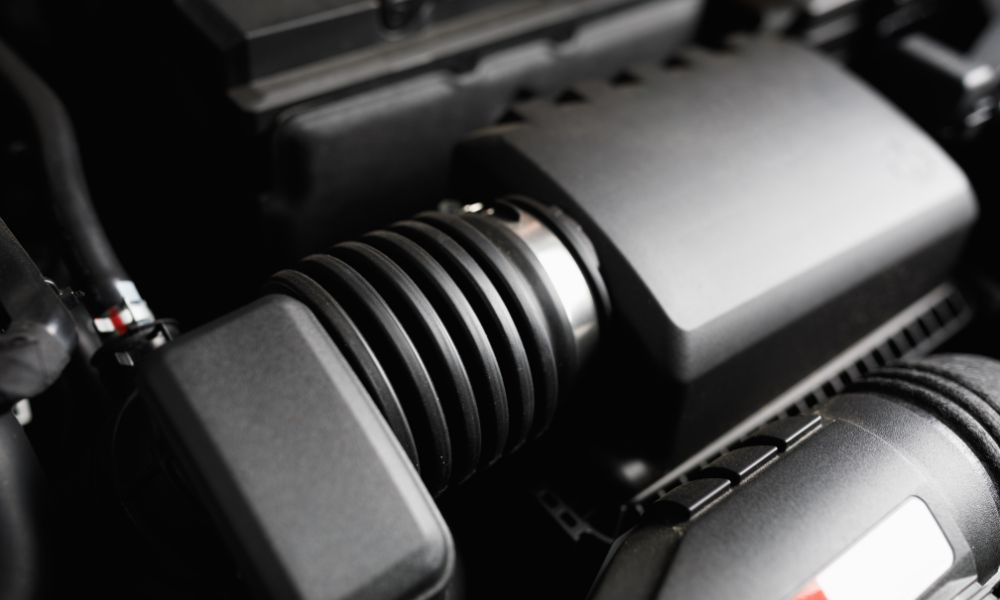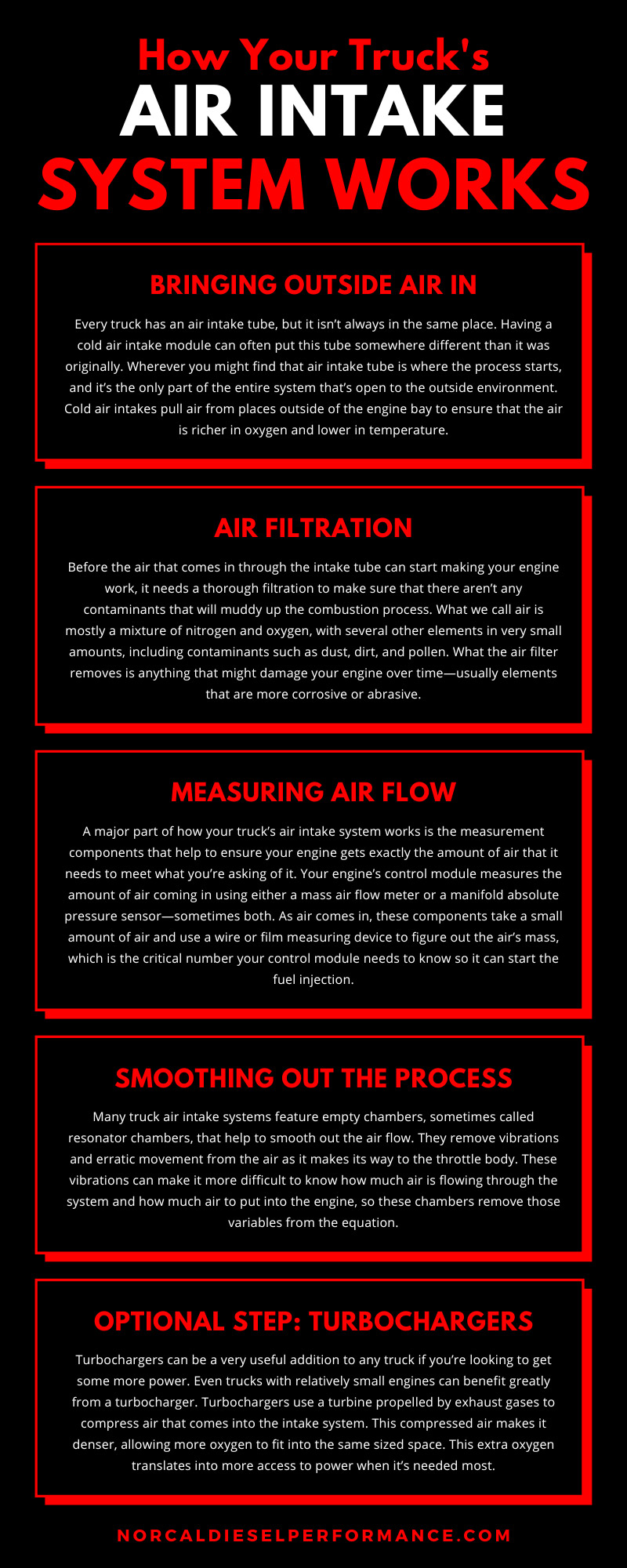


At the core of the vehicles that we love so much, a deceptively simple chain reaction takes place that gives us that feeling of freedom. Our truck’s engines only really need two things to work as they should: oxygen and a fuel source. The fuel is easy enough to understand, and with oxygen all around us, it can make the whole combustion engine process seem rather basic. You get some air and fuel in a combustion chamber and light it up to start moving.
While this is true on the most basic level, there is a lot more that goes on between you turning on your truck and starting to move. The system that your truck uses to bring air in from the outside and funnel it to the combustion chamber actually has quite a few steps that help ensure your engine runs as smoothly as possible. In this article, we’ll take a step-by-step look at how your truck’s air intake system works. Knowing how this process gets started and the many steps it takes to actually get your truck to move can give you a little more appreciation for something that has become commonplace over time.
Every truck has an air intake tube, but it isn’t always in the same place. It might be under the hood somewhere, hidden behind the grille, or many other places. Having a cold air intake module can often put this tube somewhere different than it was originally. Wherever you might find that air intake tube is where the process starts, and it’s the only part of the entire system that’s open to the outside environment. Cold air intakes pull air from places outside of the engine bay to ensure that the air is richer in oxygen and lower in temperature.
Before the air that comes in through the intake tube can start making your engine work, it needs a thorough filtration to make sure that there aren’t any contaminants that will muddy up the combustion process. What we call air is mostly a mixture of nitrogen and oxygen, with several other elements in very small amounts, including contaminants such as dust, dirt, and pollen. What the air filter removes is anything that might damage your engine over time—usually elements that are more corrosive or abrasive. Keeping that air filter clean is a crucial step in maintaining an efficient engine.
A major part of how your truck’s air intake system works is the measurement components that help to ensure your engine gets exactly the amount of air that it needs to meet what you’re asking of it. Your engine’s control module measures the amount of air coming in using either a mass air flow meter or a manifold absolute pressure sensor—sometimes both. As air comes in, these components take a small amount of air and use a wire or film measuring device to figure out the air’s mass, which is the critical number your control module needs to know so it can start the fuel injection.
Many truck air intake systems feature empty chambers, sometimes called resonator chambers, that help to smooth out the air flow. They remove vibrations and erratic movement from the air as it makes its way to the throttle body. These vibrations can make it more difficult to know how much air is flowing through the system and how much air to put into the engine, so these chambers remove those variables from the equation.
Turbochargers can be a very useful addition to any truck if you’re looking to get some more power. Even trucks with relatively small engines can benefit greatly from a turbocharger. Turbochargers use a turbine propelled by exhaust gases to compress air that comes into the intake system. This compressed air makes it denser, allowing more oxygen to fit into the same sized space. This extra oxygen translates into more access to power when it’s needed most. Turbochargers are often paired with parts called intercoolers because the compressed air can increase in temperature. Intercoolers help to bring air temperatures back to normal ranges.
Even if you have never heard the term throttle body before, you interact with it almost constantly as you drive your truck. The throttle body is directly connected to the accelerator pedal. Pressing down on the accelerator pedal makes the throttle plate open, allowing air to go into the engine. The further down you push the pedal, the more air gets into the engine, and the more power you have and the faster you go. If you use a cruise control setting, the throttle body works automatically through electronic signals, opening and closing on its own to maintain the right level of speed.
The intake manifold is the next step and one of the last. The intake manifold is just a series of tubes that separates the air evenly so it can enter every cylinder at once. Depending on the kind of intake manifold you have, it might just move the air along the fastest route so that every cylinder has the air it needs. More advanced versions of intake manifolds exist, and they create circuits for the air to travel through that can better adjust the air delivery based on your needs.
The manifold leads the air in the system to the intake valves situated at the entrance of each cylinder. These valves have very specific angles and speeds at which they open to make sure that the right amount of air makes it into the engine at the right time. As the pistons descend, they pull air into the chambers. When the valves close, the pistons return to their original state and compress the air that’s left in the chamber.
It's incredible to learn about these machines that we often take for granted. What might seem like a simple tube that brings air into the engine is actually a meticulously designed and engineered system that makes our rides much smoother and more enjoyable. To give your air intake an upgrade you can really feel, check out our Norcal Diesel Performance’s Ford 6.7 cold air intake systems. The difference in performance is something you can’t get anywhere else.

You must login to post comments.